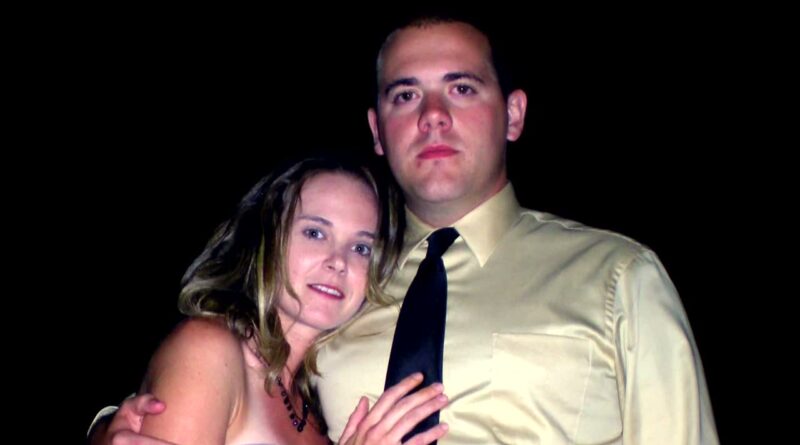Michelle O’Connell Dies and Family Questions Suicide in St. Augustine Florida
Michelle O’Connell was 24 years old—a young mother with a tight family circle in St. Johns County, Florida, and plans that stretched well beyond one late-summer evening. By all accounts she carried the overlapping identities common to that age: devoted sister and daughter, protective parent, and a woman testing the boundaries of independence. On the night of September 2, 2010, inside a residence just outside St. Augustine, her life ended from a single gunshot wound inflicted with a duty pistol kept in the home. What followed was not only a sudden death but a controversy that has persisted for years: an official determination of suicide on one side, and on the other, a family and a chorus of outside observers who argue the evidence warrants a different conclusion—or at minimum a fundamentally independent re-examination.
The Setting and the People Around Her
St. Augustine is America’s oldest continuously inhabited European-established city, a coastal community where law enforcement, tourism, military retirees, and working families intersect. Michelle’s immediate world was anchored by her young daughter, siblings, and parents. She was in a romantic relationship with a local sheriff’s deputy; his work schedule and the rhythms of policing threaded through their shared life. Friends later recalled ordinary days: childcare swaps, work shifts, arguments that came and went, the negotiations of two adults trying to define a future while managing present-tense pressures.
The Final Evening
The hours of September 2 were neither outwardly dramatic nor especially memorable to those on the periphery. There were routine communications and domestic movement in and out of the residence. As night drew on, a gunshot ruptured the ordinary. First responders arrived to a scene where Michelle lay mortally wounded from a shot to the mouth, a handgun nearby, and the sudden chaos that accompanies any violent death: a call to dispatch, emergency medical measures that quickly yielded to the solemnity of a crime scene, and a residence transformed into an evidence map.
The Immediate Determination
From the earliest moments, responding personnel and investigators oriented toward suicide as the working theory. That official conclusion would be entered into records and public statements in the days that followed. For the family and those who later scrutinized the case, this early anchoring—made by an agency that employed Michelle’s boyfriend—became a central tension. Critics would argue that the timeline from death to conclusion moved too quickly, that neutral distance is essential in cases that involve a law enforcement officer’s home or weapon, and that any perception of institutional self-review inevitably erodes public trust.
Physical Evidence and Interpretive Fault Lines
On paper, a single gunshot wound to the mouth using a household handgun can be consistent with suicide. But physical evidence rarely speaks in simple binaries; it must be analyzed within context. Observers interested in an alternative explanation have raised recurring questions: the precise position of the body in relation to the firearm, trace and pattern evidence, mechanical aspects of the weapon, the presence or absence of certain injuries or residues, and the comparative likelihood of different sequences of events. Those who accept the suicide ruling argue that the totality of physical and circumstantial facts fits a self-inflicted wound after an emotionally fraught period. Those who challenge the ruling contend that specific details—individually narrow but collectively suggestive—justify re-testing, re-staging, or at least a second set of expert eyes unconnected to local stakeholders.
Scene Management and Chain of Custody
Nothing shapes a death investigation more than the quality of the first hours: who enters, who touches, what gets photographed, labeled, bagged, and preserved; the questions asked and those never imagined. Families critical of the official determination have pointed to scene management choices that, in their view, foreclosed lines of inquiry. The counterargument is that responders followed established protocols, documented what they found, and retained the items that mattered. The truth about process often exists in careful, unglamorous details—time stamps, logs, evidence receipts—that may never sway a casual reader but matter enormously to experts reconstructing what happened and when.
Domestic Context and Competing Narratives
Violent death inside a home nearly always invites inquiry into the domestic context. Relationships carry arguments and reconciliations, plans and threats, secrets and confidences. Supporters of the suicide determination emphasize known stressors and personal struggles that can culminate in self-harm. Detractors emphasize moments of fear or conflict, and statements from friends or family that suggest Michelle was planning for a future rather than an exit. Each side, in good faith or otherwise, can cherry-pick anecdotes to support its view; responsible analysis resists that temptation and looks for independent corroboration—messages, work schedules, third-party observations, medical and counseling records—while acknowledging privacy constraints and the limits of hindsight.
Institutional Conflicts and Calls for Independence
Because the firearm was a service weapon and the residence tied to a deputy, outside observers argued early for investigative independence. Over the years, state-level personnel have reviewed the case to varying degrees, and a patchwork of assessments and counter-assessments has accumulated. The friction between local authority and external review—the question of who should lead, who should assist, and how findings should be communicated—became part of the public story. People can disagree on conclusions; what is harder to dispute is that cases touching a law-enforcement household require unusual transparency to maintain confidence in the result.
Media Scrutiny and the Court of Public Opinion
National coverage arrived with documentaries, long-form articles, and podcasts. These programs elevated the family’s concerns, questioned specific investigative choices, and introduced the case to audiences far from Florida. With that attention came two predictable effects. First, new tips and perspective sometimes surfaced as people realized their fragment of information might be relevant. Second, the narrative became more polarized: headlines sharpened angles, social media filled with confident assertions, and nuance was often the first casualty. The case remains emblematic of a larger cultural argument about how police-involved deaths—whether of civilians or within officer households—should be handled to avoid real or perceived conflicts of interest.
Litigation, Reviews, and Aftermath
Over time, the file has accumulated legal filings, public records requests, and periodic reinvestigations or reviews. These legal and administrative arcs rarely provide the cinematic clarity people crave. Instead, they produce rulings about process and jurisdiction, victories and defeats that are meaningful to the parties yet unsatisfying to anyone searching for a single declarative answer to what happened that night. Each ruling, each memo, each analysis sits like a tile in a mosaic that still feels incomplete.
Theories in Contention
The case turns on two principal scenarios:
- Self-inflicted death (official ruling): This theory holds that Michelle, facing personal stress, used a readily available firearm to end her life. Advocates note the wound location, opportunity, and aspects of the scene as consistent with suicide.
- Homicide by another party (family’s position): This theory argues that the scene details and relational context are more consistent with an act by someone else, whether during a confrontation or as the result of escalating control and harm. Proponents emphasize contested elements of the physical evidence and urge independent forensic review of preserved items.
A third, less-discussed possibility is accidental discharge, a scenario in which a sequence of risky handling or confrontation ends in tragedy without a deliberate intent to kill. While less common given the wound location and firearm type, responsible analysis keeps such possibilities on the table until ruled out by physics and forensics.
What an Ideal Re-Examination Would Look Like
If one were to design a model re-examination today, it would have several components:
- Independent Team: A multidisciplinary group with no prior involvement: homicide investigators, a medical examiner or forensic pathologist, a firearms/toolmarks specialist, and a bloodstain pattern analyst—none employed by the original agency.
- Comprehensive Evidence Audit: A catalog of all preserved items, photographs, measurements, and prior lab results; verification of chain of custody; assessment of storage conditions that could affect re-testing.
- Modern Forensic Testing: Where feasible, high-resolution imaging, touch DNA or trace analysis on key items, reconstruction of firearm mechanics, and computer-aided scene modeling to test competing hypotheses against measurable constraints.
- Contextual Review: Structured interviews with witnesses not previously questioned in depth, as well as re-interviews where prior accounts conflict and could be clarified with new timelines or digital records.
- Transparent Reporting: A published summary of methods, limitations, and conclusions, with appendices available to the family and, as law allows, to the public—so confidence in the process does not depend on simply trusting an institution.
The Human Cost of Uncertainty
Technical debates about trajectories and residues can overshadow the reality at the center of the file: a young woman is gone, a child grew up without her, and a family has spent years living in the space between grief and advocacy. For them, the difference between “suicide” and “homicide” is not semantic—it reframes memory, responsibility, even faith in public institutions. Communities, too, absorb a case like this. It becomes a parable about how to open the door to an investigator, how to evaluate official statements, and how to ask for help without surrendering hard questions.
Why the Case Endures
The endurance of this case in the national conversation is not just about its facts; it is about its symbolism. It sits at the intersection of intimate partner dynamics, gun access, law-enforcement culture, and the public’s demand for independent scrutiny when officials or their households are involved. It compels people to reconcile two uncomfortable truths: institutions are staffed by human beings capable of both professionalism and error, and narrative certainty is not guaranteed merely by desire. The responsible path is to build processes that minimize conflicts, maximize measurable facts, and keep the dignity of the deceased and the living at the center.
A Way Forward
For some, nothing short of a new conclusion will feel like justice. For others, process reforms in similar cases—automatic external jurisdiction, mandatory outside lab work on officer-involved household deaths, clear public reporting—would be a meaningful legacy even if the original determination stands. The best outcome blends both aims: exhaust what science and method can still deliver for Michelle’s file, and ensure that future families are spared the compounding pain of doubt.
Discover more from City Towner
Subscribe to get the latest posts sent to your email.




